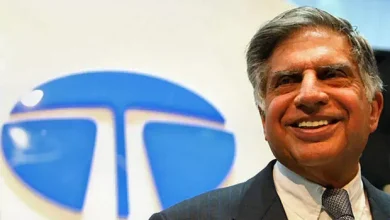RBI changed these rules related to credit card and personal loan

In the most recent policy review by the Reserve Bank, the Governor highlighted worries about the rising prevalence of unsecured loans within the banking sector. The Governor urged banks to vigilantly monitor indicators of financial strain. Subsequently, the Reserve Bank has taken the initiative to enforce stricter regulations. Central banks have instructed financial institutions to maintain higher capital reserves as a precautionary measure to contain potential adverse effects in the event of financial strain. Recent signals received by the Central Bank indicate a rapid surge in unsecured loans, heightening concerns due to their elevated risk, further amplifying the Reserve Bank’s apprehensions.
What decision has the Reserve Bank made? The Reserve Bank has decided to elevate the risk weights concerning consumer credit exposure for commercial banks. This adjustment applies to both existing and new loans. The bank specified that while personal loans fall under these regulations, home loans, education loans, vehicle loans, and gold loans are exempt. The risk weight for consumer loans affected by these regulations has surged by 25 percentage points to reach 125 percent. Consequently, banks will need to maintain a larger reserve against consumer loans compared to previous requirements.
What impact will this decision have? In simpler terms, the Reserve Bank aims to manage unsecured loans such as credit cards and personal loans. The increased risk weight will reduce banks’ capital adequacy ratio (CAR), representing the ratio between a bank’s available capital and its risk exposure. Consequently, to boost CAR, banks will need more capital, potentially impacting companies’ performance. This capital-raising process might lead to increased loan costs, making borrowing more expensive. Entities heavily reliant on unsecured loans with already low CAR could face heightened pressure. Notable impacts are expected on entities like SBI Card, Aditya Birla Cap, RBL Bank, Axis Bank, etc.
Why was this decision made? A considerable number of Indians are currently relying on credit cards and other consumer loans for purchases, resulting in record-low household deposits. India’s wealth, encompassing bank deposits, cash, and equity investments, has plummeted to a 16-year low relative to GDP. The surge in spending and decline in deposits raise concerns about potential loan defaults in the event of an economic downturn.
What did the Reserve Bank Governor mention? Post the policy review, Reserve Bank Governor Shaktikanta Das highlighted the rapid growth in certain segments of personal loans. This surge is closely monitored by the Reserve Bank, which has advised banks and NBFCs (Non-Banking Financial Companies) to fortify their internal systems for timely detection of any financial stress. He cautioned about the swift changes worldwide, anticipating challenges from various fronts.
















